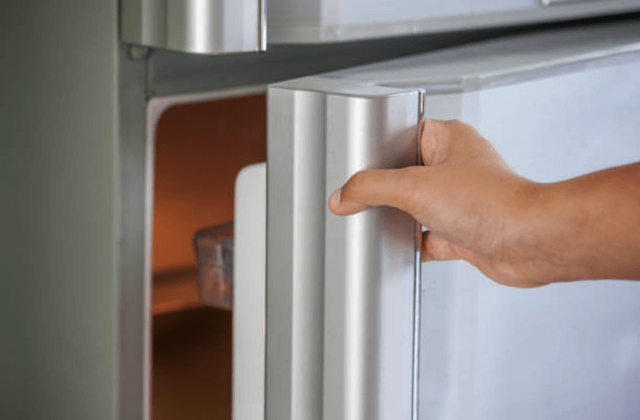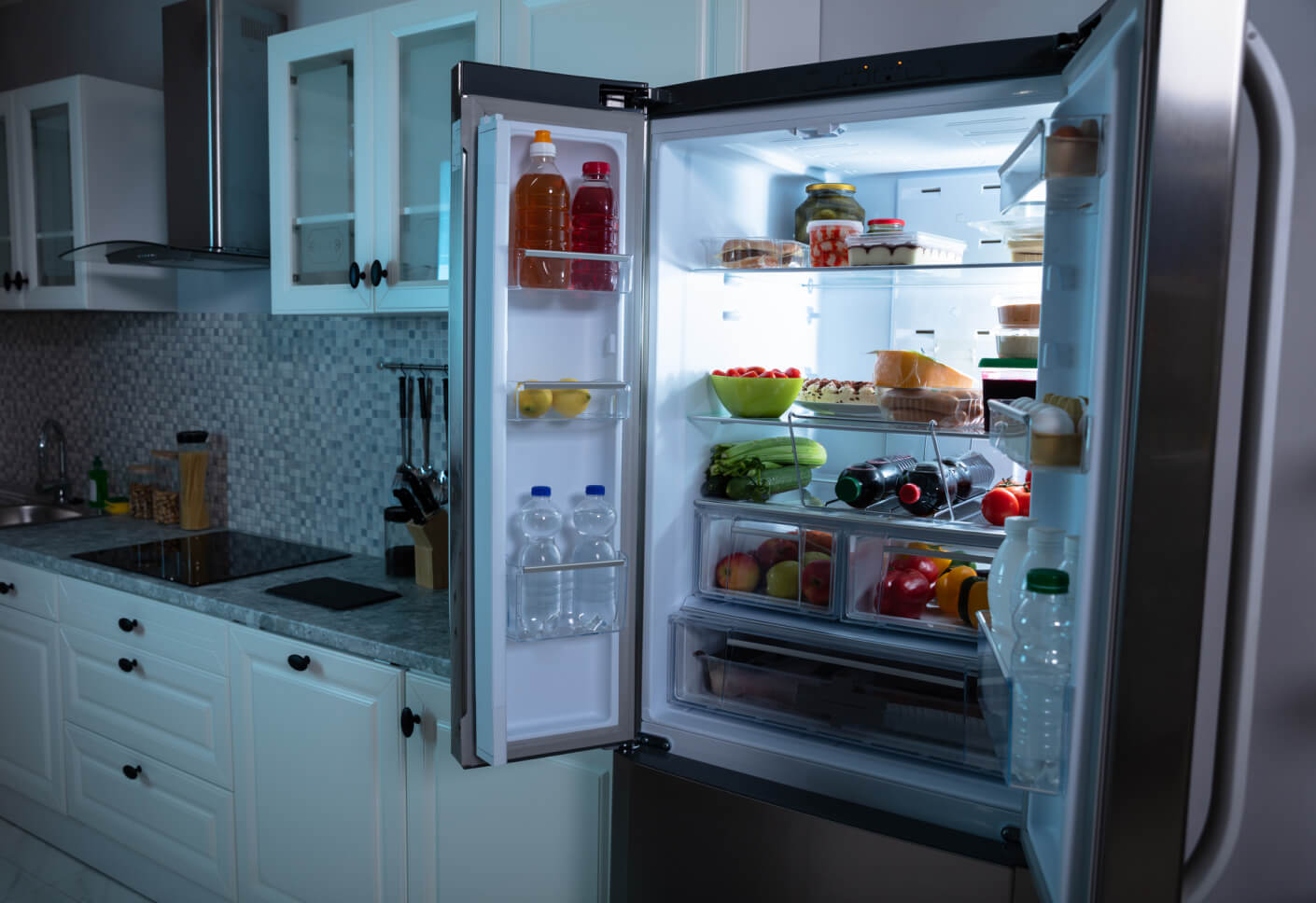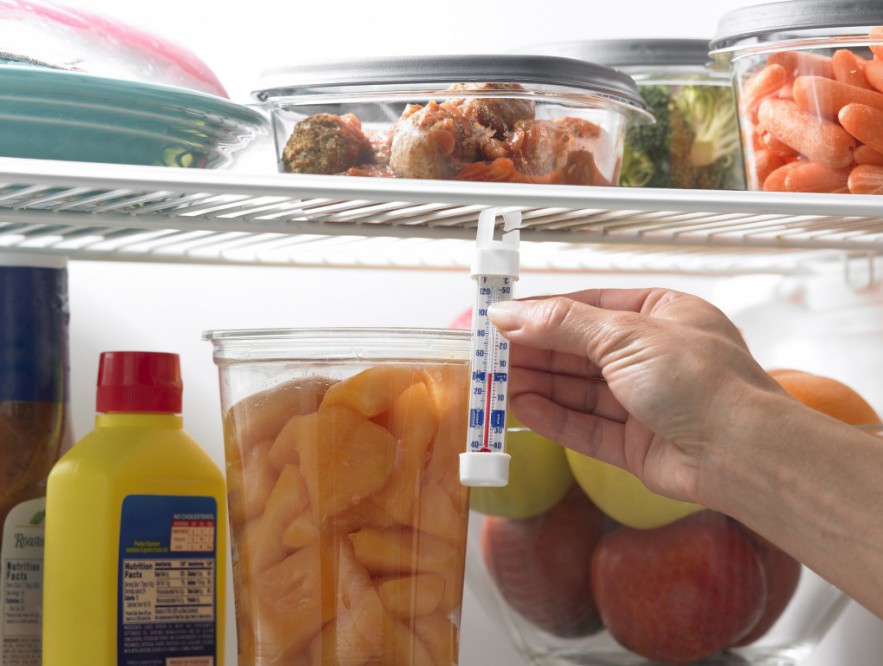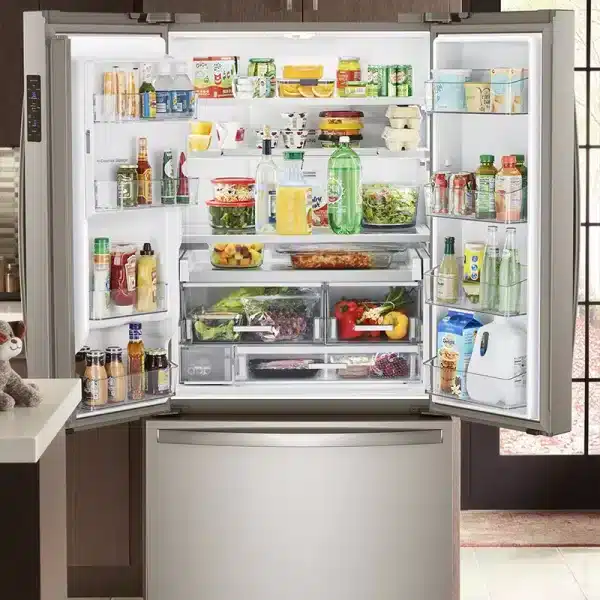If your refrigerator is not cooling properly, you might be wondering what’s wrong and how to fix it. A refrigerator that is not cooling can cause food spoilage, waste energy, and increase your electricity bill. Fortunately, there are some common causes and easy fixes for a refrigerator that is not cooling. In this blog post, we will show you how to troubleshoot and fix a refrigerator that is not cooling in 10 simple steps.
The most common causes and fixes for a refrigerator that is not cooling are: checking the power, thermostat, vents, and coils; making sure the fridge is not too full or frosty; and resetting the temperature control. Some more complex fixes are: checking the condenser fan, the heater, and the evaporator area.
Step 1: Check the Power
The first thing to do when your refrigerator is not cooling is to check if it has power. If the light inside the fridge does not come on when you open the door, it means the fridge is not getting power. Here are some possible reasons and solutions:
- The power cord is loose or unplugged. Make sure the power cord is firmly plugged into the wall outlet and check for the light again.
- The circuit breaker is tripped or the fuse is blown. Check your main electrical panel for a flipped breaker or a blown fuse and switch it back on if necessary.
- The outlet is faulty or damaged. Try plugging another appliance into the same outlet and see if it works. If not, you may need to replace or repair the outlet.
:max_bytes(150000):strip_icc()/refrigerator-is-not-cooling-5104936-hero-7d21f01ff9dd4874898cfdb3bf737595.jpg)
Step 2: Check the Thermostat
The thermostat is the device that controls the temperature inside the fridge. If the thermostat is set too low or malfunctioning, it can cause the fridge to not cool enough. Here are some possible reasons and solutions:
- The thermostat is set too low by mistake. Check the thermostat dial or display and make sure it is set to the recommended temperature, usually between 35°F and 40°F for the fridge and 0°F for the freezer.
- The thermostat is faulty or broken. If adjusting the thermostat does not change the temperature inside the fridge, you may need to replace it. You can buy a new thermostat online or from an appliance store and follow the instructions in your user manual to install it.
Step 3: Check the Vents
The vents are the openings that allow cold air to circulate from the freezer to the fridge and vice versa. If the vents are blocked by boxes of food or ice, they can prevent cold air from reaching the fridge compartment. Here are some possible reasons and solutions:
- The vents are blocked by food items. Rearrange your food items in both compartments and make sure there is enough space around the vents for air to flow freely.
- The vents are blocked by ice or frost. Defrost your freezer and fridge by unplugging them and letting them thaw for several hours. You can also use a hair dryer or a warm cloth to melt any ice or frost around the vents.

Step 4: Check the Coils
The coils are the metal tubes that run along the back or under the fridge. They help transfer heat from inside the fridge to outside. If the coils are dirty or dusty, they can reduce their efficiency and make your fridge work harder to cool down. Here are some possible reasons and solutions:
- The coils are dirty or dusty. Vacuum or brush off any dirt or dust from the coils using a coil cleaning brush or a vacuum cleaner attachment. You should do this at least once every six months to keep your fridge running smoothly.
- The coils are damaged or corroded. If you notice any signs of damage or corrosion on the coils, such as cracks, leaks, or rust, you may need to replace them. You can buy new coils online or from an appliance store and follow the instructions in your user manual to install them.
Step 5: Check the Condenser Fan
The condenser fan is located near the compressor at the back or bottom of the fridge. It helps cool down the compressor and the coils by blowing air over them. If the condenser fan is not working properly, it can cause your fridge to overheat and not cool enough. Here are some possible reasons and solutions:
- The condenser fan is obstructed by debris or objects. Unplug your fridge and pull it out from the wall. Remove any debris or objects that may be blocking or touching the fan blades and spin them by hand to see if they move freely.
- The condenser fan motor is faulty or burned out. If you plug in your fridge and notice that the fan does not run when the compressor is running, you may need to replace the fan motor. You can buy a new fan motor online or from an appliance store and follow the instructions in your user manual to install it.

Step 6: Check the Heater
The heater is a device that melts any frost or ice that builds up on the evaporator coils in the freezer. It turns on periodically to prevent the coils from freezing up and affecting the cooling performance of the fridge. If the heater is not working properly, it can cause your fridge to not defrost and not cool enough. Here are some possible reasons and solutions:
- The heater is defective or burned out. You can test the heater for continuity using a multimeter. If the heater does not have continuity, it means it is broken and needs to be replaced. You can buy a new heater online or from an appliance store and follow the instructions in your user manual to install it.
- The heater is controlled by a faulty or broken defrost timer or thermostat. The defrost timer and thermostat are devices that regulate when and how long the heater turns on. If they are faulty or broken, they can cause the heater to not turn on at all or to stay on too long, resulting in either frost buildup or overheating. You can test the defrost timer and thermostat for continuity using a multimeter. If they do not have continuity, they need to be replaced. You can buy new defrost timer and thermostat online or from an appliance store and follow the instructions in your user manual to install them.
Step 7: Check the Evaporator Fan
The evaporator fan is located behind a cover in the freezer compartment. It helps circulate cold air from the evaporator coils to the fridge compartment. If the evaporator fan is not working properly, it can cause your fridge to not cool enough. Here are some possible reasons and solutions:
- The evaporator fan is obstructed by ice or frost. Remove the cover inside the freezer and check if there is any ice or frost around the fan blades. If there is, you may need to defrost your freezer and fridge by unplugging them and letting them thaw for several hours. You can also use a hair dryer or a warm cloth to melt any ice or frost around the fan.
- The evaporator fan motor is faulty or burned out. If you plug in your fridge and notice that the fan does not run when the compressor is running, you may need to replace the fan motor. You can buy a new fan motor online or from an appliance store and follow the instructions in your user manual to install it.

Step 8: Check the Door Seal
The door seal is the rubber gasket that surrounds the door of the fridge and freezer. It helps create an airtight seal that prevents cold air from escaping and warm air from entering. If the door seal is damaged, dirty, or loose, it can cause your fridge to not cool enough. Here are some possible reasons and solutions:
- The door seal is damaged or torn. Check the door seal for any cracks, tears, or holes that may let air leak out. If you find any, you may need to replace the door seal. You can buy a new door seal online or from an appliance store and follow the instructions in your user manual to install it.
- The door seal is dirty or sticky. Clean the door seal with a damp cloth and mild soap to remove any dirt, food particles, or sticky residue that may prevent it from sealing properly. Dry it thoroughly with a towel before closing the door.
- The door seal is loose or misaligned. Adjust the door seal by gently pulling it away from the door frame and repositioning it so that it fits snugly around the door edge. You can also use a hair dryer to heat up the door seal and make it more flexible and pliable.
Step 9: Check the Temperature Control Board
The temperature control board is an electronic device that regulates the power supply to the compressor, fan motors, and other components of the fridge. It also displays the temperature settings and error codes on some models of fridges. If the temperature control board is faulty or damaged, it can cause your fridge to not cool enough. Here are some possible reasons and solutions:
- The temperature control board is defective or shorted out. You can test the temperature control board for signs of damage or malfunction using a multimeter. If you find any, you may need to replace the temperature control board. You can buy a new temperature control board online or from an appliance store and follow the instructions in your user manual to install it.
- The temperature control board is affected by a power surge or outage. If your fridge experienced a sudden power surge or outage, it may have caused your temperature control board to reset or malfunction. To fix this, you may need to unplug your fridge for a few minutes and then plug it back in. This may restore your temperature control board to its normal function.
Step 10: Check for Refrigerant Leak
Refrigerant is a chemical substance that circulates through the coils and absorbs heat from inside the fridge and releases it outside.




